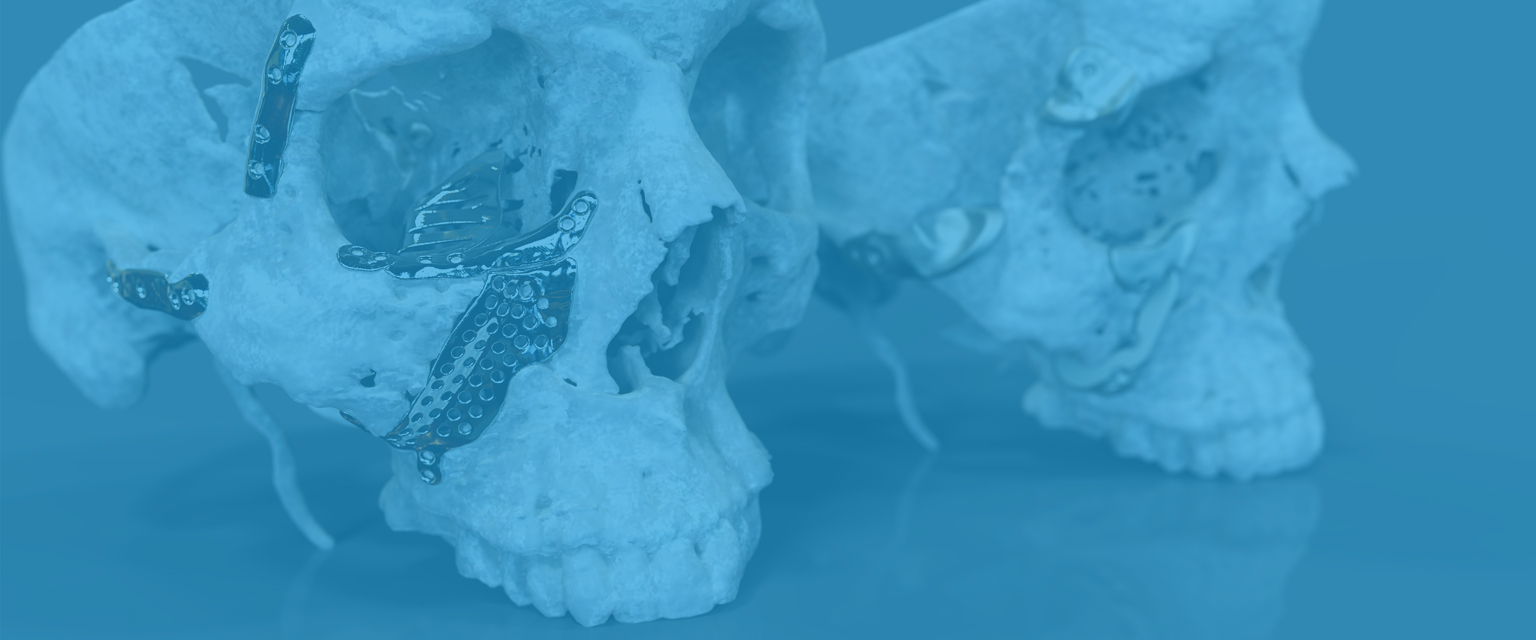

PDR’s expert design engineers worked closely with the clinical lead on this project (Mr Shakir Mustafa, Consultant Oral and Maxillofacial Surgeon, Cwm Taf University Health Board) to plan the surgical procedure digitally, and design patient-specific devices. Mr Mustafa has a significant track record of collaborative research in developing and implementing cutting-edge techniques to improve outcomes for his patients. One meeting was held to specify the surgical plan, with a second used to refine and approve the final device designs.
The Problem
The patient had suffered severe facial trauma in a road traffic collision in Cambodia and had undergone emergency surgery abroad. The result was sub-optimal. The patient was unhappy with their significant facial asymmetry and their inability to close their eye – which was poorly positioned. The purpose of this procedure was to correct the asymmetry, and restore the eye to a good position.
What We Did
PDR segmented the patient’s CT scan-data and 3d-printed a reference medical model. The physical model was used by the surgeon to assist with visualising the required saw blade cutting vectors and bone position adjustments. Three main cuts were agreed – resulting in a single large mobilised bone segment. With the bone cuts and movements established, cutting guides were designed to translate the prescribed cuts to the operating theatre. The cutting guides were 3D-printed in titanium to ensure they would resist abrasion by the saw blade and drills.
A repositioning guide was designed to locate the mobilised bone piece in its new position relative to the surrounding anatomy. This guide was designed with a low profile which allowed it to slide under soft tissues at the edges of the exposure site. Choosing titanium as the fabrication material avoided compromising the strength of the thin guide. Custom implants were designed and produced – also in 3D-printed medical grade titanium by our metal fabrication partner, Renishaw Plc.
Cut-outs in the positioning guide accommodated the implants – which were fixed in position before the guide was removed. Crucially, the implants were designed as individual, low-profile components with limited extents. This was to provide flexibility in-theatre. Individual components were not reliant on each other to be successful.
During the surgery, an unexpectedly large mass of soft tissues (containing the infra-orbital neurovascular bundle) was noted to be emerging from the anterior surface of the maxilla in a location much lower and more medial than would normally be expected. The soft tissues had presumably been displaced following the injury and initial surgery. This obstructed, and would have been partially covered by, the anterior maxillary wall on-lay implant. This prevented its use. Otherwise, the procedure adhered to the digital surgical plan.
Intra-operative photographs provide views of the devices being used in-situ. The left-hand image shows the repositioning guide and two of the implants after fixation but before guide removal. The image on the right shows the orbital floor and rim implants at the same stage.
The Result
Clinical post-operative assessment was positive. The position of the bone piece was excellent – with analysis of the post-operative scans suggesting only a small (and clinically insignificant) variation from the plan.
“Planning surgeries, designing patient-specific guides, and designing custom implants with PDR helps me achieve better outcomes for our patients. Surgeries are more predictable, their duration reduced, and their end result more accurate. PDR’s history and expertise make them obvious collaborators and service providers in our field of cranio-maxillofacial reconstruction. With their input, we continue to lead the way internationally and showcase the pride of our Welsh NHS-Academia-Industry collaboration, all over the world.”

